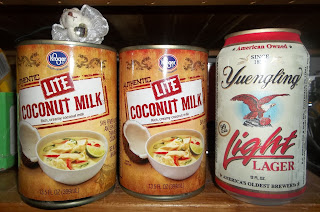7. This is a turtle my sister found in our yard. Turtles are examples of an ectotherm. Ectotherms are “cold-blooded” animals. They rely on its surrounding
environment (such as sunlight or heated rocks) to regulate their body
temperatures, unlike warm-blooded animals who regulate their bodies internally. Ectotherms need less food than warm-blooded animals, but often cannot
live in the cold.
8. The coconut meat we eat (and the coconut milk) is an example of an endosperm. Endosperms are tissues inside the seeds of flowering plants. In addition to coconuts, endosperms of wheat is used for whole wheat bread, and barley endosperm is used to make beer.
9. Enzymes are proteins that speeds up reactions, and help break down things. Milk is one of things we put in our body that contains enzymes. Laundry detergent have enzymes that break down and remove stains.
10. This is a banana that is ripening and starting to turn brown. This happens with the help of ethylene. Ethylene is a natural plant hormone that help
ripen fruits. It is a colorless flammable gas with sweet and musky
smell, and is also widely used in chemical industries worldwide.
11. These are some heads of lettuce from our garden. Lettuce is one of long-day plants. Long-day plants are plants that flower and grow in the
summer because of the longer days and the shorter nights. These flowers only
bloom when they have more than 12 hours of daylight.
12. Yeast is an example of an unicellular organism. Unicellular organisms are any life form that only consist of one cell. They are also called single celled organisms.







No comments:
Post a Comment